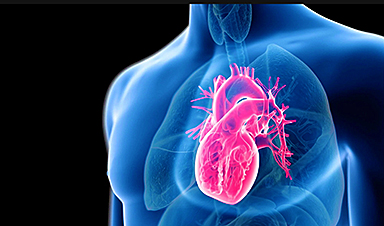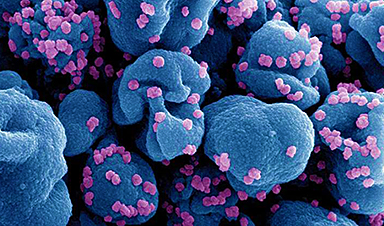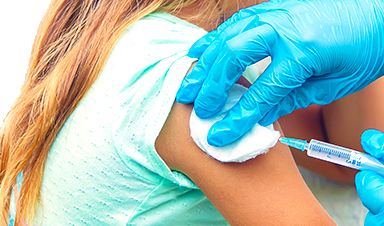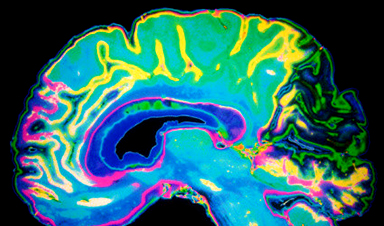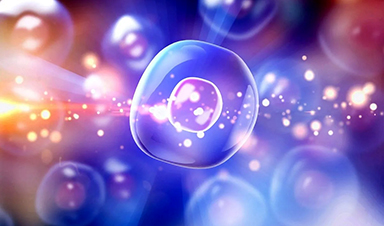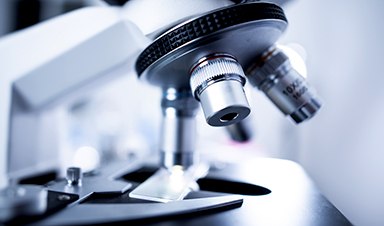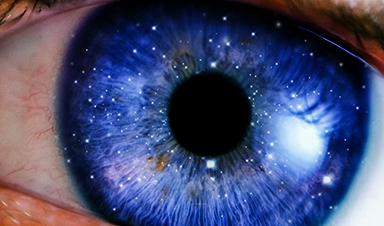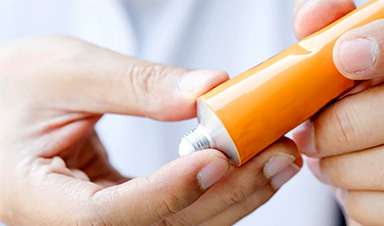UC study of Fernald data links environmental phenols to heart toxicities
Environmental phenols are present in numerous everyday consumer products, serving as preservatives in packaged foods, parabens in shampoos, and bisphenol A (BPA) in plastic dishware. Consequently, people are consistently exposed to these chemicals on a daily basis.
Some of these environmental phenols are known to have cardiac toxicities. Now, an interdisciplinary study involving four University of Cincinnati College of Medicine professors is revealing their adverse impact on the heart's electrical properties, and the research has been published in the journal Environmental Health.
"This is the first study to look at the impact of phenol exposure on cardiac electrical activity in humans," said Hong-Sheng Wang, PhD, professor in the Department of Pharmacology, Physiology and Neurobiology and the study's lead author.
Researchers used data from the Fernald Community Cohort, which includes nearly 10,000 people who lived near the former U.S. Department of Energy uranium processing site at Fernald, outside Cincinnati, and participated in the Fernald Medical Monitoring Program between 1990 and 2008.
Much of the cohort did not experience exposure to uranium beyond the radiation received by the general population. Wang and his team used their data, including biological samples and medical records, in the study so uranium exposure would not be a factor in the findings — making them relevant to the general population. Because urine samples and electrocardiograms, or EKGs, were collected on the same day, the results were significant for analyzing exposure to environmental phenols.
The EKGs, which measure cardiac electrical activities, were read by board-certified physicians, and the urine samples were sent to the Centers for Disease Control and Prevention for exposure analysis.
Findings on the Heart's Electrical Activity
One goal of the study was to identify any changes in EKG parameters associated with environmental phenol exposure.
The heart is driven by electrical activity, so anything affecting its electrical properties can have a detrimental impact and possibly result in arrhythmias.
The research concluded higher exposure to some environmental phenols is associated with altered cardiac electrical activity.
Researchers found higher exposure to BPA, BPF, and BPA+F in women is associated with a longer PR interval, a delay in the time it takes for electrical signals to move from the atria at the top of the heart to the ventricles.
"Our findings were highly sex-specific," said Wang. In women, researchers identified an association with longer QRS duration, or contraction of the ventricles, and dysfunction of the electrical impulses of the heart.
"It was particularly pronounced in women with higher body mass indexes," said Wang.
In men, researchers found higher exposure to triclocarban (TCC), an antimicrobial agent, led to longer QT intervals in the heart — meaning the heart's electrical system is taking too long to recharge, a situation that can contribute to heart rhythm dysfunction. TCC has since been banned in the United States.
Implications for Heart Health
Wang also pointed out that typical exposure levels alone are unlikely to cause clinically significant heart disease in healthy people.
"These were not dramatic changes that we observed, but moderate changes to cardiac electrical activity," he said. "However, they were particularly pronounced in certain subpopulations."
He said the altered cardiac activity could exacerbate existing heart disease or arrhythmias in a patient, especially older adults or those with other risk factors.
"Now there are new chemicals out there, so the next step would be to examine these newer environmental chemicals and to focus on their impact on an individual level in those who are predisposed to heart disease," said Wang.
Reference: "Association of same-day urinary phenol levels and cardiac electrical alterations: analysis of the Fernald Community Cohort" by Jack Rubinstein, Susan M. Pinney, Changchun Xie and Hong-Sheng Wang, 19 September 2024, Environmental Health.
DOI: 10.1186/s12940-024-01114-x
Other contributors in this study included Susan Pinney, PhD, FACE, professor of epidemiology in the Department of Environmental and Public Health Sciences; Jack Rubinstein, MD, FACC, professor of clinical cardiology in the Department of Internal Medicine; and Changchun Xie, PhD, professor in the Department of Biostatistics, Health Informatics and Data Sciences.
This study was funded by grants from the National Institute of Environmental Health and the University of Cincinnati Center for Environmental Genetics.
News
Older chemical libraries show promise for fighting resistant strains of COVID-19 virus
SARS‑CoV‑2, the virus that causes COVID-19, continues to mutate, with some newer strains becoming less responsive to current antiviral treatments like Paxlovid. Now, University of California San Diego scientists and an international team of [...]
Lower doses of immunotherapy for skin cancer give better results, study suggests
According to a new study, lower doses of approved immunotherapy for malignant melanoma can give better results against tumors, while reducing side effects. This is reported by researchers at Karolinska Institutet in the Journal of the National [...]
Researchers highlight five pathways through which microplastics can harm the brain
Microplastics could be fueling neurodegenerative diseases like Alzheimer's and Parkinson's, with a new study highlighting five ways microplastics can trigger inflammation and damage in the brain. More than 57 million people live with dementia, [...]
Tiny Metal Nanodots Obliterate Cancer Cells While Largely Sparing Healthy Tissue
Scientists have developed tiny metal-oxide particles that push cancer cells past their stress limits while sparing healthy tissue. An international team led by RMIT University has developed tiny particles called nanodots, crafted from a metallic compound, [...]
Gold Nanoclusters Could Supercharge Quantum Computers
Researchers found that gold “super atoms” can behave like the atoms in top-tier quantum systems—only far easier to scale. These tiny clusters can be customized at the molecular level, offering a powerful, tunable foundation [...]
A single shot of HPV vaccine may be enough to fight cervical cancer, study finds
WASHINGTON -- A single HPV vaccination appears just as effective as two doses at preventing the viral infection that causes cervical cancer, researchers reported Wednesday. HPV, or human papillomavirus, is very common and spread [...]
New technique overcomes technological barrier in 3D brain imaging
Scientists at the Swiss Light Source SLS have succeeded in mapping a piece of brain tissue in 3D at unprecedented resolution using X-rays, non-destructively. The breakthrough overcomes a long-standing technological barrier that had limited [...]
Scientists Uncover Hidden Blood Pattern in Long COVID
Researchers found persistent microclot and NET structures in Long COVID blood that may explain long-lasting symptoms. Researchers examining Long COVID have identified a structural connection between circulating microclots and neutrophil extracellular traps (NETs). The [...]
This Cellular Trick Helps Cancer Spread, but Could Also Stop It
Groups of normal cbiells can sense far into their surroundings, helping explain cancer cell migration. Understanding this ability could lead to new ways to limit tumor spread. The tale of the princess and the [...]
New mRNA therapy targets drug-resistant pneumonia
Bacteria that multiply on surfaces are a major headache in health care when they gain a foothold on, for example, implants or in catheters. Researchers at Chalmers University of Technology in Sweden have found [...]
Current Heart Health Guidelines Are Failing To Catch a Deadly Genetic Killer
New research reveals that standard screening misses most people with a common inherited cholesterol disorder. A Mayo Clinic study reports that current genetic screening guidelines overlook most people who have familial hypercholesterolemia, an inherited disorder that [...]
Scientists Identify the Evolutionary “Purpose” of Consciousness
Summary: Researchers at Ruhr University Bochum explore why consciousness evolved and why different species developed it in distinct ways. By comparing humans with birds, they show that complex awareness may arise through different neural architectures yet [...]
Novel mRNA therapy curbs antibiotic-resistant infections in preclinical lung models
Researchers at the Icahn School of Medicine at Mount Sinai and collaborators have reported early success with a novel mRNA-based therapy designed to combat antibiotic-resistant bacteria. The findings, published in Nature Biotechnology, show that in [...]
New skin-permeable polymer delivers insulin without needles
A breakthrough zwitterionic polymer slips through the skin’s toughest barriers, carrying insulin deep into tissue and normalizing blood sugar, offering patients a painless alternative to daily injections. A recent study published in the journal Nature examines [...]
Multifunctional Nanogels: A Breakthrough in Antibacterial Strategies
Antibiotic resistance is a growing concern - from human health to crop survival. A new study successfully uses nanogels to target and almost entirely inhibit the bacteria P. Aeruginosa. Recently published in Angewandte Chemie, the study [...]
Nanoflowers rejuvenate old and damaged human cells by replacing their mitochondria
Biomedical researchers at Texas A&M University may have discovered a way to stop or even reverse the decline of cellular energy production—a finding that could have revolutionary effects across medicine. Dr. Akhilesh K. Gaharwar [...]
